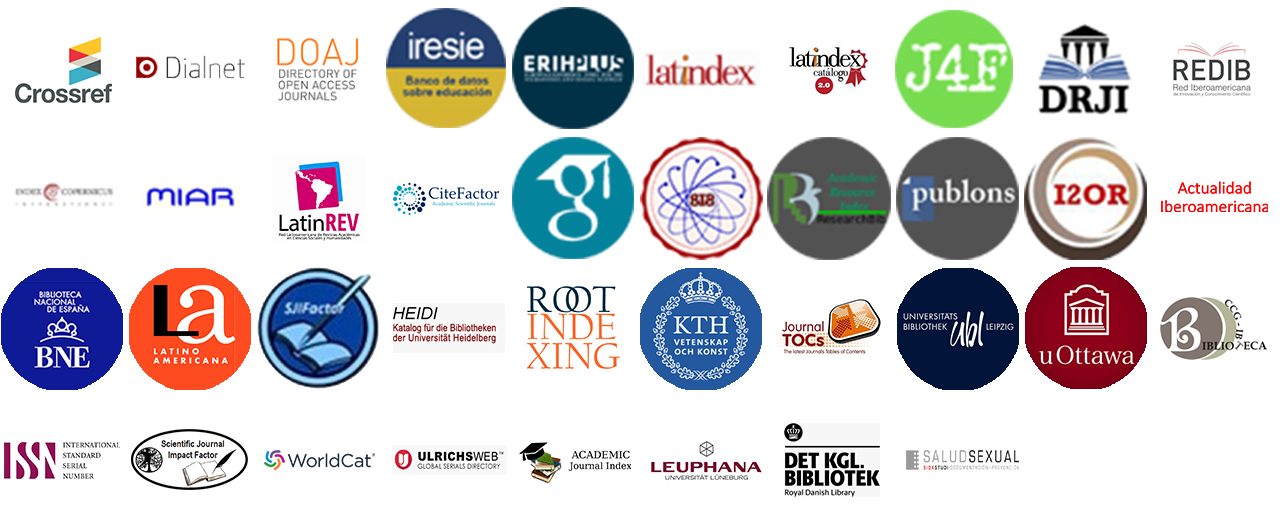Use of DownSampling and UpSampling techniques to address data imbalance in predicting stroke-prone individuals
DOI:
https://doi.org/10.36825/RITI.12.25.007Keywords:
Data Imbalance, DownSampling, UpSampling, Random Forest, Machine LearningAbstract
The DownSampling and UpSampling data balancing techniques are used applied to a set related to individuals prone to having a stroke. The purpose of this work is to demonstrate the importance of the application of DownSampling and UpSampling techniques when we find data that present imbalance; making a comparison between the two mentioned techniques and analyzing the behavior of the measures that are calculated in the confusion matrix when the prediction model is created. The data set is composed of 4981 records, of which 4773 belong to the class of those who have not suffered a stroke and 248 to the class that has had one. It was found that for this data set the best technique to treat the imbalance is UpSampling with the largest of its replicas and when the model is going to be evaluated it is important not only to base it on its Accuracy, but also on other measures that result from the confusion matrix, this to achieve a better analysis of the results obtained.
References
Martinelli, J. E. (2022). Clasificación de datos desbalanceados. Su aplicación en la predicción de bajas de beneficiarios de un servicio de salud privado. Facultad de Informática, Universidad Nacional de La Plata, Argentina. https://sedici.unlp.edu.ar/bitstream/handle/10915/147410/Documento_completo.pdf?sequence=1&isAllowed=
Kaggle (2022). Brain Stroke Dataset Classification Prediction. https://www.kaggle.com/datasets/jillanisofttech/brain-stroke-dataset
Breiman, L. (2001). Random Forest. Machine Learning, 45 (1), 5-32. http://dx.doi.org/10.1023/A:1010933404324
Del Castillo Collazo, N. (2020). Predicción en el diagnóstico de tumores de cáncer de mama empleando métodos de clasificación. Revista de Investigación en Tecnología de la Información (RITI), 8 (15), 96-104. https://doi.org/10.36825/RITI.08.15.009
Cirillo, A. (2017). R Data Mining. Implement data mining techniques through practical use cases and real-world datasets. Packt Publishing Ltd.
Villalba, F. (2018). Aprendizaje supervisado en R. https://fervilber.github.io/Aprendizaje-supervisado-en-R/bosques.html
Sotaquirá, M. (2021). Los Bosques Aleatorios: Clasificación y Regresión. https://www.codificandobits.com/blog/bosques-aleatorios/
Carrasco Calle, R. A. (2021). ¿Cómo manejar el desbalance de datos? https://datasciencepe.substack.com/p/como-manejar-el-desbalance-de-datos
Cruz-Reyes H., Reyes-Nava A., Rendón-Lara E., Alejo R. (2018). Estudio del desbalance de clases en bases de datos de microarrays de expresión genética mediante técnicas de Deep Learning. Research in Computing Science, 147 (5), 197–207. http://dx.doi.org/10.13053/rcs-147-5-15
Landa Cosio, N. A. (2021). Cómo actuar ante el desbalance de datos. https://medium.com/@nicolasarrioja/c%C3%B3mo-actuar-ante-el-desbalance-de-datos-a0d64f2b9619#:~:text=Downsampling%20consiste%20en%20quitar%20puntos,que%20la%20clase%20menos%20
Aldás, J., Uriel, E. (2017). Análisis Multivariante aplicado con R (2da Ed.). Ediciones Paraninfo.
Amazon Web Services (AWS). (2024). ¿Qué es el sobreajuste? https://aws.amazon.com/es/what-is/overfitting/
IBM. (2024). ¿Qué es el sobreajuste? https://www.ibm.com/mx-es/topics/overfitting
Published
How to Cite
Issue
Section
License
Copyright (c) 2024 Revista de Investigación en Tecnologías de la Información

This work is licensed under a Creative Commons Attribution-NonCommercial 4.0 International License.
Esta revista proporciona un acceso abierto a su contenido, basado en el principio de que ofrecer al público un acceso libre a las investigaciones ayuda a un mayor intercambio global del conocimiento.
El texto publicado en la Revista de Investigación en Tecnologías de la Información (RITI) se distribuye bajo la licencia Creative Commons (CC BY-NC
 ), que permite a terceros utilizar lo publicado citando a los autores del trabajo y a RITI, pero sin hacer uso del material con propósitos comerciales.
), que permite a terceros utilizar lo publicado citando a los autores del trabajo y a RITI, pero sin hacer uso del material con propósitos comerciales.



